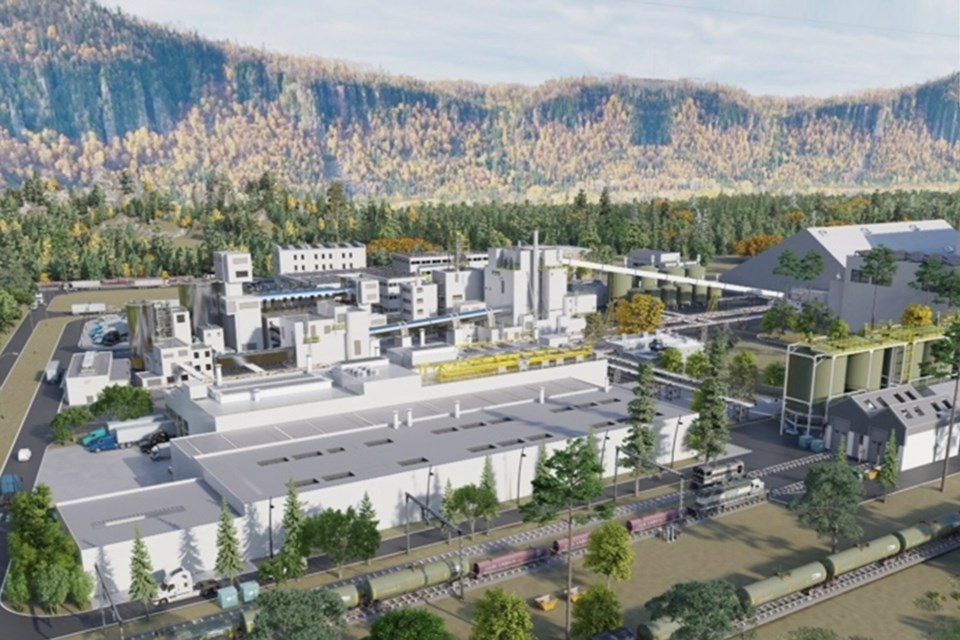The three Veldman brothers, well known around the Sault, are partnering with an Ontario mine developer to build what they hope will be the province's first lithium refinery in Red Rock, 110 kilometres northeast of Thunder Bay on the north shore of Lake Superior.
That just-announced deal is just one piece of a huge Critical Mineral Corridor vision that the Veldman-owned BMI Group started pitching Monday on the first day of the Prospectors & Developers Association of Canada (PDAC) conference in Toronto.
If the brothers – Paul, John and Justus – can drum up enough support, their ginormous infrastructure and multimodal logistics dreamscape would stretch from northern Ontario to the Niagara region.
"From developing the northernmost port on the Great Lakes in partnership with the Red Rock Indian Band, to working with the town of Red Rock, Iron and Oak Railroad Services and Hydro One, we've been working to make Red Rock industry-ready," said Paul Veldman, BMI's chief executive officer.
"Today, that work has secured a pivotal partnership with Rock Tech and a new future for the Red Rock community. Together, we're working to fortify Ontario's Critical Mineral Corridor from the north to Niagara, to establish a robust, made-in-Ontario lithium supply chain crucial for meeting the province's burgeoning automotive and battery manufacturing potential," the CEO said.
BMI and Rock Tech Lithium Inc. announced Monday that they've signed a cooperation agreement aimed at building Ontario's first lithium converter at the former Norampaca Paper Mill site in Red Rock.
BMI is investing $5.5 million in the new refinery.
The chosen site is owned by BMI and the Red Rock Indian Band and is situated about 60 kilometres south of Rock Tech’s advanced Georgia Lake lithium deposit, a 5,700-hectare piece of ground, 17 kilometres south of Beardmore and 145 kilometres northeast of Thunder Bay.
There, the company has outlined a 14.8-million-ounce lithium resource with an initial mine life of nine years for an open pit and underground operation.
Rock Tech previously said Georgia Lake could move to a mine construction phase this year, but that start date is dependent on its refinery plans.
"The investment by BMI will include an equity component, where BMI will acquire an equity stake in the project, as well as a long-term loan," the two companies said Monday in a joint news release.
"The exact terms and conditions of the lease and investment agreements will be negotiated in the coming weeks and amongst others are subject to the outcome of usual due diligence."
Rock Tech cited these reasons for choosing the Red Rock site:
-
availability of major supporting infrastructure including the proximity to BMI's emerging multimodal logistics hub and an energy grid providing abundant clean electricity
-
strong support for the project by the local community and Indigenous partners
-
proximity to the Georgia Lake project
"With BMI developing multimodal road and rail logistics capabilities in the port of Red Rock, the location is strategically positioned to become the prime lithium refining destination in northern Ontario," the Rock Tech release said.
"Equipped with the capability to process lithium from third-party mining projects, the Red Rock converter will further unlock northern Ontario's nascent lithium mining sector."
Rock Tech is one of four major lithium players in the northwest. Two of them — Avalon Advanced Materials and Green Tech Metals — have already acquired brownfield properties in Thunder Bay.
The company is building another lithium conversion plant in Germany to supply the European market. BMI Group is hoping that by establishing a critical mineral transportation and bulk processing hub in Red Rock, developing multimodal hubs and creating state-of-the-art industrial manufacturing sites in Niagara, it can blaze a major supply chain for critical minerals and electric vehicles.
Following a number of false starts in Sault Ste. Marie, the Veldmans currently own three properties here: the pulp tower and board mill buildings on the old St. Marys Paper site, and the Brewery Block near the downtown plaza.
The company is known to be planning some kind of "significant" mixed-use development on the Brewery Block site, most likely including market-rent housing (possibly condominiums), light commercial and perhaps some institutional elements.
The Veldmans initiated but did not retain control of a number of development projects in and around what's now known as the Canal District, including the Machine Shop and the popular Mill Market.
Across Ontario, BMI is currently managing 24 development projects covering industrial, commercial, residential, and hospitality sectors.
- with files from Ian Ross at Village Media's Northern Ontario Business
